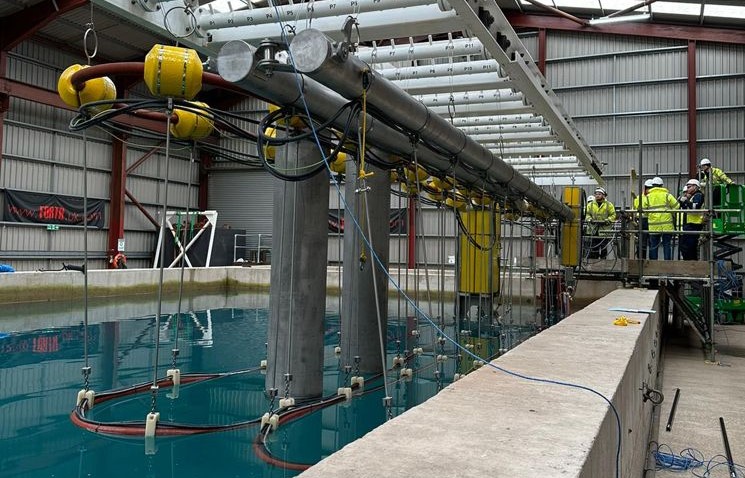A pioneering new technique to remove sludge from nuclear fuel ponds has been successfully trialled at one of the UK’s largest wet test facilities.
The Decommissioning Alliance (TDA), comprising nuclear fabricators Westinghouse, Jacobs and consulting engineers Atkins, is tasked with installing equipment to allow operators to safely retrieve debris laying at the bottom of radioactive fuel ponds at sites operated by the watchdog Nuclear Decommissioning Authority, so the recovered material can be passed into safe, long-term storage.
The team achieved the feat by attaching an industrial pump to a 40-metre flexible pipe. The leech-like tool can then suck away the sludge for safe storage.
During the process, remotely operated vehicles lock a hinged double boom arm in position. Project manager Scott Bond said: “The work we are carrying out at the site has been running since 2010. It’s designed to help us reduce the inventory in the pond, which in turn reduces the overall risk.
“Our new methodology of installing the BSRT and the umbilical has the potential to be a game changer.
The trial is designed to ensure 100 per cent certainty of safety when handling irradiated, corrosive waste.
Bond added: “Using the excellent indoor facility meant we were able to successfully trial the methods and replicate site conditions on more than one occasion, ensuring the TDA installation team are familiar with the equipment, tooling and installation sequence, when the time comes to putting the learning into live action.”
Forth’s projects director Graham Cartwright added: “It’s been great to be able to play a part in what is such a major development for the nuclear industry”.




